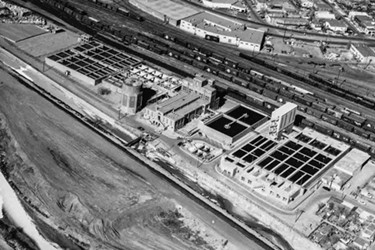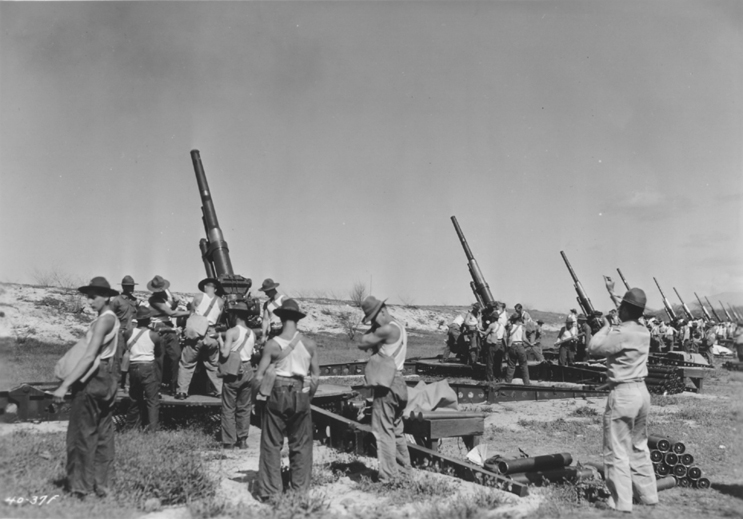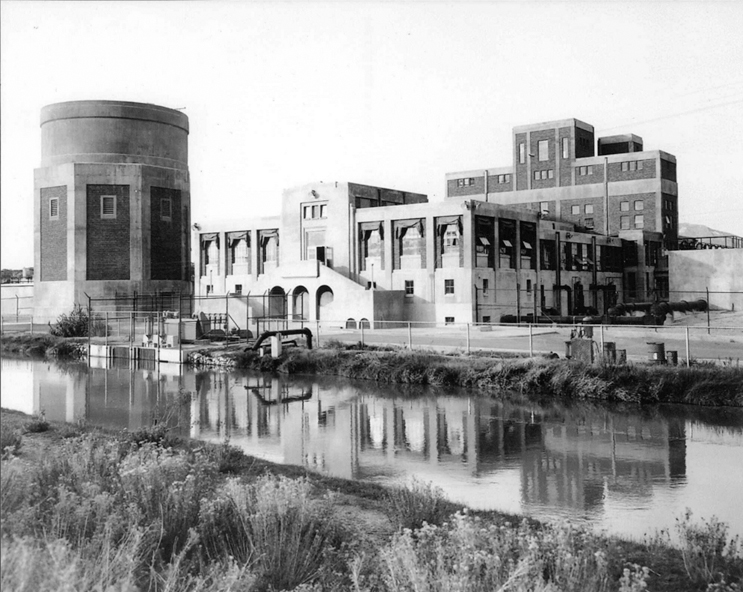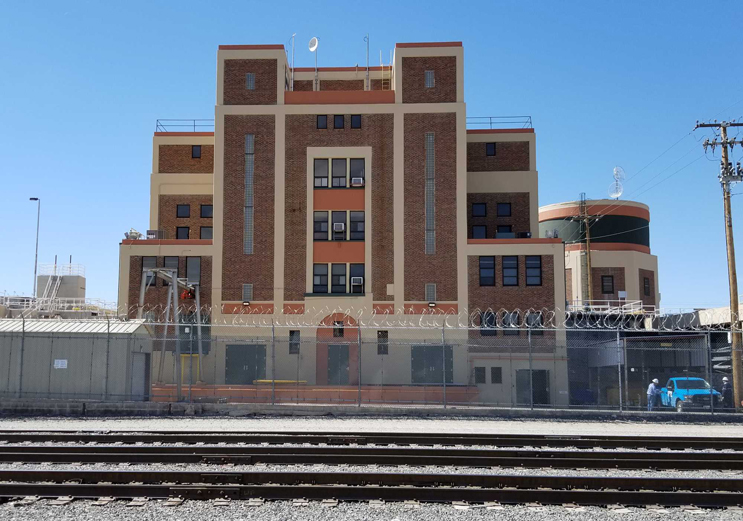Robertson Water Treatment Plant Celebrates 75 Years
By Martha C. Koester

In 75 years, El Paso Water has come full circle.
More than seven decades ago, El Paso’s population growth was stretching the border city’s water supply and requiring new approaches that would enable the city to continue to thrive.
As EPWater observes the 75th anniversary of the Robertson Water Treatment Plant, the city’s utility is now at a similar crossroads. Over the next three decades, El Paso is expected to grow to 1.3 million people. That growth comes with a responsibility to ensure a sustainable supply of high-quality water.
Population Surge
In the 1900s, City of El Paso leaders battled unique challenges associated with a growing city on the U.S./Mexico border. From 1910 to 1930, Census figures show El Paso’s population nearly tripled from 51,000 to 131,000. El Pasoans faced crime, growth, health and environmental issues, some of them linked to water quality and supply. The city had previously drawn water from the Rio Grande, but turned to wells exclusively when residents demanded better water quality.
On the cusp of World War II, city and Fort Bliss leaders learned of expansion plans of the national defense program. Training at Fort Bliss intensified during WWII in 1940 and 1941. Tens of thousands of anti-aircraft troops would soon descend on Fort Bliss for training, taxing the water supply.

Meanwhile, Chairman of the City Water Board W.E. Robertson painted a dismal picture of El Paso’s future. Without expensive expansion and exploration, the city’s underground water supply was limited to 20 years at most. “The water situation here is fast approaching a crisis,” he said.
City officials signed a contract in Feb. 18, 1941, with the U.S. Bureau of Reclamation to secure water rights from the Rio Grande through the Elephant Butte Dam and Reservoir. With the assistance of a federal grant, the city hired Headman, Ferguson and Carollo of Phoenix to design a $1 million plant, boasting new technology and processes developed to produce high-quality water.
Ground was broken Feb. 12, 1942, and the plant was named after Robertson a month later at a ceremony featuring the Bowie High School Band. Robertson said his efforts came only as a part of his duty as a citizen in the community.
As the U.S. boosted its involvement in WWII, construction continued at the plant, which overlooked the site of the old Watts’ well — El Paso’s first water system. Ashley G. Classen, superintendent of the City Water and Sewage Departments, made three trips to Washington to secure funding for the plant’s construction materials and was ultimately successful.
Work on the W.E. Robertson Water Treatment Plant, dubbed the Canal plant by locals, was completed by building contractor R.E. McKee in November 1943. Classen and Elwood J. Umbenhauer, new plant manager, led a preliminary tour of the building, including its state-of-the-art laboratory. “This magnificent plant is for the use of the people of El Paso, not just for a day or a year, but for all time,” Mayor Anderson said at the opening ceremony.

The water treatment plant produced about 10 million gallons a day, with a peak of 12 million. It was operated in three shifts, with three operators, three apprentice operators and a janitor.
Boomtown On The Border
By 1960, El Paso’s burgeoning population had tripled since the Robertson plant was completed. To meet water demands, the decade-old Public Service Board in 1963 authorized engineers to draw up plans for expansion of the water system, including the plant on Canal Street.
Work began in April 1965 on the new plant, located next door to the existing treatment facility. The PSB posthumously honored Umbenhauer — who board members said was directly responsible for the improvement and development of the water and sewer systems when he served as PSB director — by naming the new plant after him. The Umbenhauer plant was completed in 1967 and increased capacity of the Robertson plant to 40 million gallons of water per day.
Other than a few technological advancements that allow for more efficient monitoring, today the plant works much the same as it did 75 years ago, said current Superintendent Ruben Montes. “The water’s safe, and that’s one of our main goals here — to provide safe drinking water for the citizens of El Paso,” Montes said.

EPWater President and CEO John Balliew, who began his utility career at the plant laboratory, is proud of the facility’s longevity. The Rio Grande and the plant will continue to be an important part of the utility’s water supply strategy, he said.
“This structure will be producing water another 50 years, another 75 years from now,” Balliew said. “We just need to make sure that we have the right team of dedicated people and the right funding to be able to pay for the needed maintenance and upkeep.”
Martha C. Koester is a Public Information Coordinator for El Paso Water. She is a former newspaper journalist of more than 20 years.
